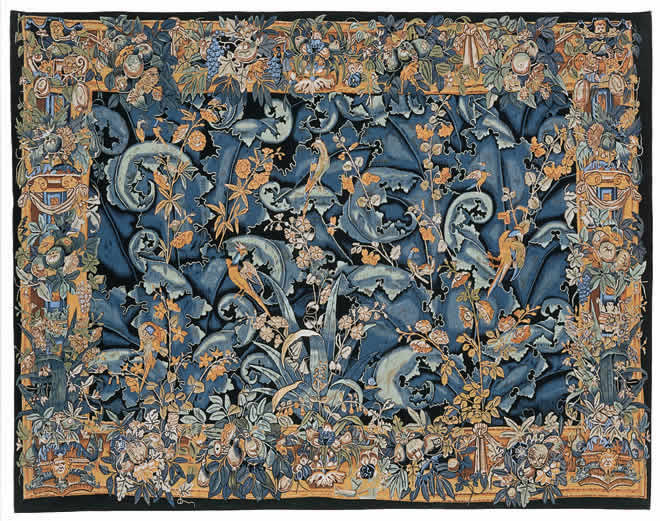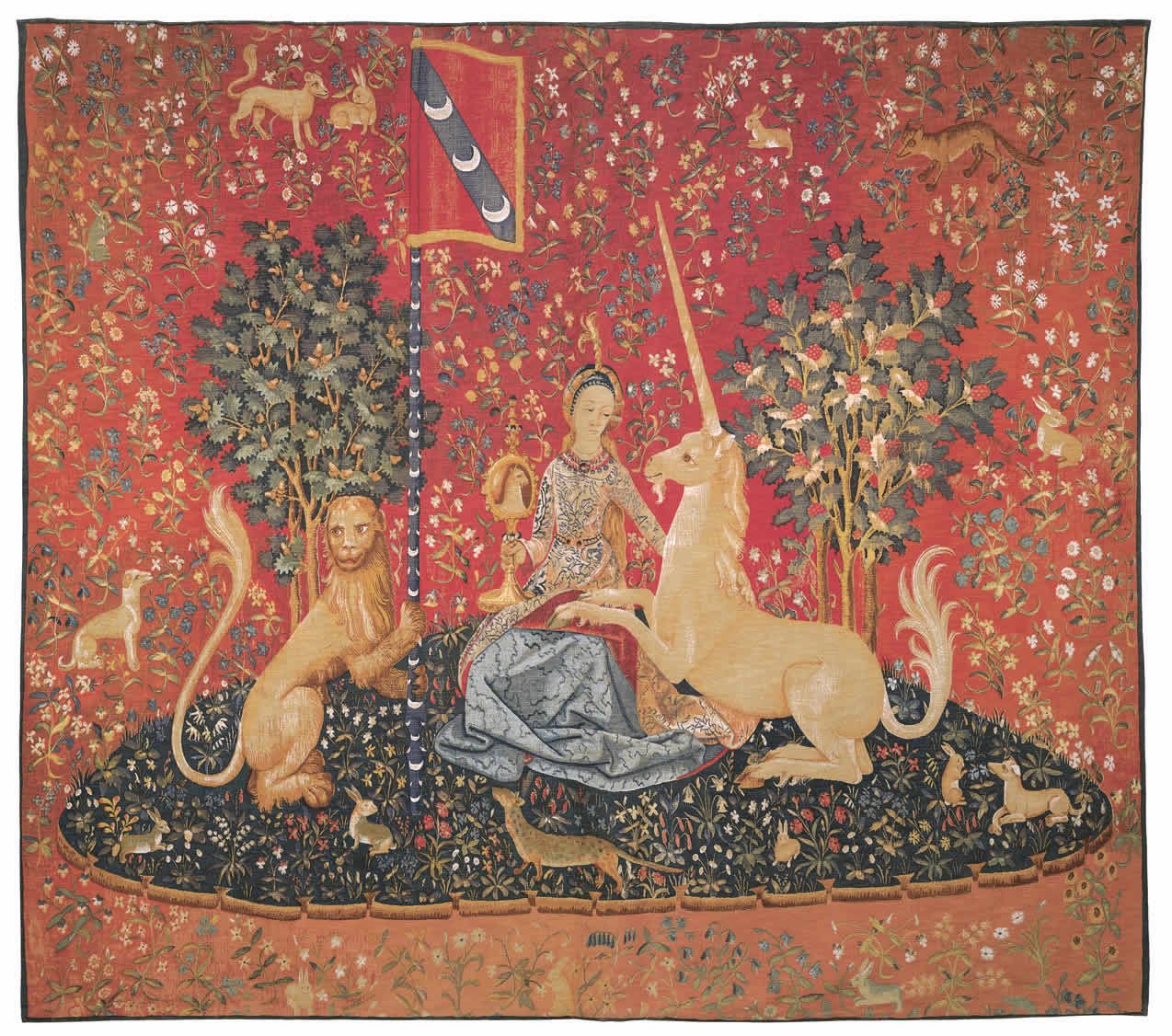The Silkscreen Process
This method of reproducing the original tapestries enables very authentic replicas to be created, with a genuine patina or “aged’ appearance. Tapestries produced by this method are particularly effective in period properties and in situations where an ancient look is required.
The woven tapestry fabric of which they are composed has an irregular texture which closely simulates the antique stitch. The design is then produced by means of each colour being individually applied through silkscreen by hand. Approximately sixteen colours are used in this process, commencing with the lightest colours, gradually working through to the darker colours, thereby building up many subtle shading effects and colour-tone gradations.
Tapestries created in this way are entirely made by hand, involving a very lengthy production time, and the results are undoubtedly the most authentic copies of the original tapestries as we know them today.


The Weaving Process
Woven tapestries are produced on Jacquards looms. These ancient oak-framed looms are replicas of the looms built in 1757 by Jacques de Vaucanson (1709 – 1782). The operation is entirely by hand, demanding great skill on the part of the master weavers.
Tapestries are composed of wool, cotton and silk. The wool provides an ancient appearance, the cotton is used to give strength, and the silk is used to create highlights in various parts such as clothing and flowers. The composition of these materials differs depending on the tapestry being woven. The final product has a unique lustre and beauty, and is the result of much patience, skill and attention to detail on the part of the master weavers who continue this tradition.
